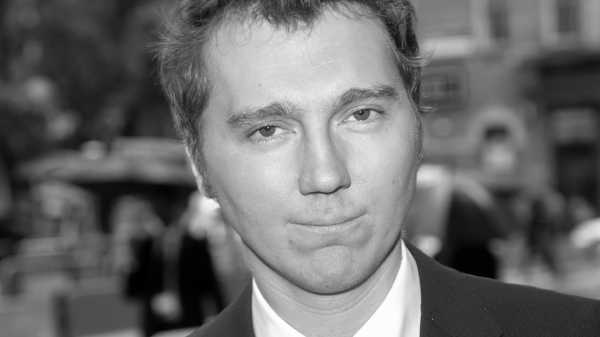
Paul Dano sized up the menu at Dumpling Galaxy, a brightly lit eatery inside a mall in Flushing’s Chinatown. “I’ve never been here, so I wanted to try it,” he said. “And it’s a good name, Dumpling Galaxy.” He wore a denim shirt, round glasses, and a red cap bearing the logo of a ranch store in Scottsbluff, Nebraska—a gift from his longtime partner, the actress Zoe Kazan, which she brought home from the set of the new Coen brothers film, “The Ballad of Buster Scruggs.” At thirty-four, Dano still has the boyish, pincushion face he had at twenty-two, when he played a spazzy teen-ager in the indie comedy “Little Miss Sunshine,” though his manner is that of a sedate old gentleman. “Lamb and squash,” he told the waiter. “And what beef one do you recommend?”
That blend of youthful befuddlement and wise-beyond-years reflection suffuses his directorial début, “Wildlife,” which opens this weekend. Set in small-town Montana in 1960, it follows an adolescent boy (Ed Oxenbould) who watches his parents’ marriage disintegrate. Mother (Carey Mulligan) is a part-time swimming instructor with a self-destructive flair; Father (Jake Gyllenhaal) loses his job at a golf club and heads for the mountains to fight a wildfire. The film is based on a novel by Richard Ford, which Dano discovered several years ago while browsing at BookCourt, the erstwhile store in Cobble Hill, Brooklyn. He was hooked by the first few lines, which he recited from memory: “ ‘In the fall of 1960, when I was sixteen and my father was for a time not working, my mother met a man named Warren Miller and fell in love with him. This was in Great Falls, Montana, at the time of the Gypsy Basin oil boom, and . . .’ ” Dano trailed off. “Something about ‘My father had come here hoping to get a piece of that good luck.’ ” He scrunched his face. “It’s very good, and I’m not happy that I can’t remember it.”
Dano was struck by the book’s unhappy family portrait. “There’s something moving to me about the idea that we just don’t know what’s going on in the lives around us,” he said. He knew that he wanted to make a film version after envisioning the final shot, so he wrote to Ford, who granted him the rights and added, “My book’s my book, and your picture’s your picture.” “That was such an incredible sense of permission,” Dano recalled. He wrote a first draft and showed it to Kazan, who is also a playwright and wrote the screenplay for the 2012 film “Ruby Sparks.” “She was, like, ‘It’s good . . .’ in a way that was totally not believable,” Dano said. “She had notes on every page.” They became co-writers, trading off drafts and occasionally reading aloud in their Brooklyn apartment. The script took several years to finish: at one point, Dano went to Russia for six months to play Pierre in a BBC One adaptation of “War and Peace,” while Kazan starred in films like “The Big Sick.” “ ‘Wildlife’ was my little secret,” he said. “When I was on the subway, I had something to daydream about.”
For atmosphere (and location scouting), he and Kazan took a road trip from Lewiston, Idaho, where the film’s fictional Brinson family moves from, to Great Falls, Montana. “I don’t think we wrote—we took some pictures, hung out, did bed-and-breakfasts,” Dano said. He was determined to shoot in Montana, but Great Falls looked too modern to play itself, and the state lacked the right tax incentives. So they budgeted four days in the Montana mountains and shot the rest in Oklahoma. Day Three, Dano recalled, was a doozy. The crew had rented two identical forest-green vintage cars, to save time switching camera angles, but one of them came with a busted windshield. That, plus iffy weather, an indie budget, and an underage lead actor with restricted work hours, made the whole thing a logistical feat. “That was the first day I had to drop a shot,” Dano said. “I remember feeling, Oh, fuck.”
He drew on his past collaborations with directors including Paul Thomas Anderson (“There Will Be Blood”), Denis Villeneuve (“Prisoners”), and Steve McQueen (“12 Years a Slave”). Of Anderson, he recalled, “I remember seeing him wait for the oil to be dripping right. It’s time and money, but it’s got to be right.” A New York City native, Dano has been acting professionally since age eleven, when he was in a play in Stamford, Connecticut. He made his first appearance on Broadway soon after, in a 1996 revival of “Inherit the Wind,” starring George C. Scott and Charles Durning. (“I remember he’d often eat raw tomatoes,” Dano said of Durning.) One night, Arthur Miller came to see the show and asked to meet Dano, but Dano has little memory of it: “I was more concerned with getting Ben & Jerry’s afterwards.” He met Kazan in 2007, when they acted together in an Off Broadway play directed by Ethan Hawke—Dano had played a younger version of Hawke in the film “Taking Lives.” This winter, they’ll play brothers in a Broadway revival of Sam Shepard’s “True West.” “We’re quite different, which is good for the brothers,” Dano said.
He finished up his dumplings and went exploring. There was a grocery store hawking dragon fruit and pigs’ feet, an underground DVD shop stocked with action flicks. Passing through a Chinese herb store, he said, “It’s really fun to be so out of your element, so close to home.”
Sourse: newyorker.com






